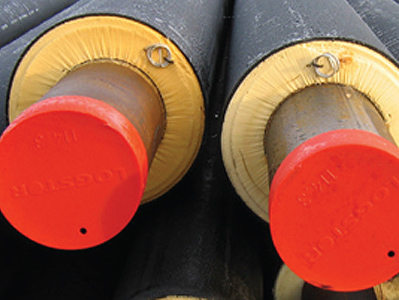 Digitalisation is becoming increasingly intertwined with everyday life, from transport, to communication, sports or education. Also in the energy sector, more and more digital solutions are present.
Digitalisation is becoming increasingly intertwined with everyday life, from transport, to communication, sports or education. Also in the energy sector, more and more digital solutions are present.
Currently, the investments in digital energy infrastructure sum up to about 50 billion dollars, higher than the global investments in the gas power sector. In comparison to the electricity sector, digitalisation in heating and cooling networks has not taken off to the same extend yet. Nevertheless, in the transition towards the next generation of networks, digitalisation will take a very important role.
Digitalisation will make our networks more sustainable: it will increase the share of renewable and excess energy and it will enable the reduction of temperature levels in the networks. It will also make networks more reliable, by opening opportunities for better safeguarding systems. Finally, it will make networks more profitable, since it can lead to lower heat losses, reduction of expensive fossil fuel consumption and more optimal usage of heat pumps and CHPs.
The European Horizon 2020-project TEMPO is a project in which we experiment with digitalisation in district heating networks. The question of course is what is meant by a ‘digital heat network’. What makes a heat network a digital heat network? It should be stressed that there is no univocal definition for this (yet), but some criteria or conditions should be fulfilled, in our opinion. A digital heat network is a network with a large number of sensors present in the network. Also, a digital network includes automated recording, transfer and storage of data, whereby the data is analysed automatically. Finally, these analyses are not only used for billing purposes, but also to optimize the operation of the network. The analysis and visualisation of data is a very important feature of digital heat networks since data as such, a stream of numbers, is of little interest. Instead, to get interesting, data must be transformed into information. In this form, it can be interpreted by humans. This is something that engineers do all the time: translate numbers into graphs, tables etc. But instead of doing it manually, in digital heat networks this is automated, e.g. by machine learning or data mining algorithms.
In the TEMPO-project, digitalisation is the common thread. In the project, six technological innovations are developed and tested: an automated on-line supervision platform to detect faults in DH substations; visualisation tools for expert and non-expert users; a smart network controller to maximize sustainable energy consumption and minimize the return temperature; an innovative piping system; building installation optimization; and decentralised storage buffers.
These technologies will be demonstrated in existing and new district heating networks, in rural as well as urban areas. With excitement the project team is looking forward to the coming winter, when the technologies will be tested for the first time. All information can be found on our website (https://www.tempo-dhc.eu).
Stay tuned for the first results!
Contact information:
Dirk Vanhoudt, Senior Researcher, District Heating and Cooling Systems EnergyVille - VITO
Email: dirk.vanhoudt@vito.be
Telephone: +32 14 33 59 74